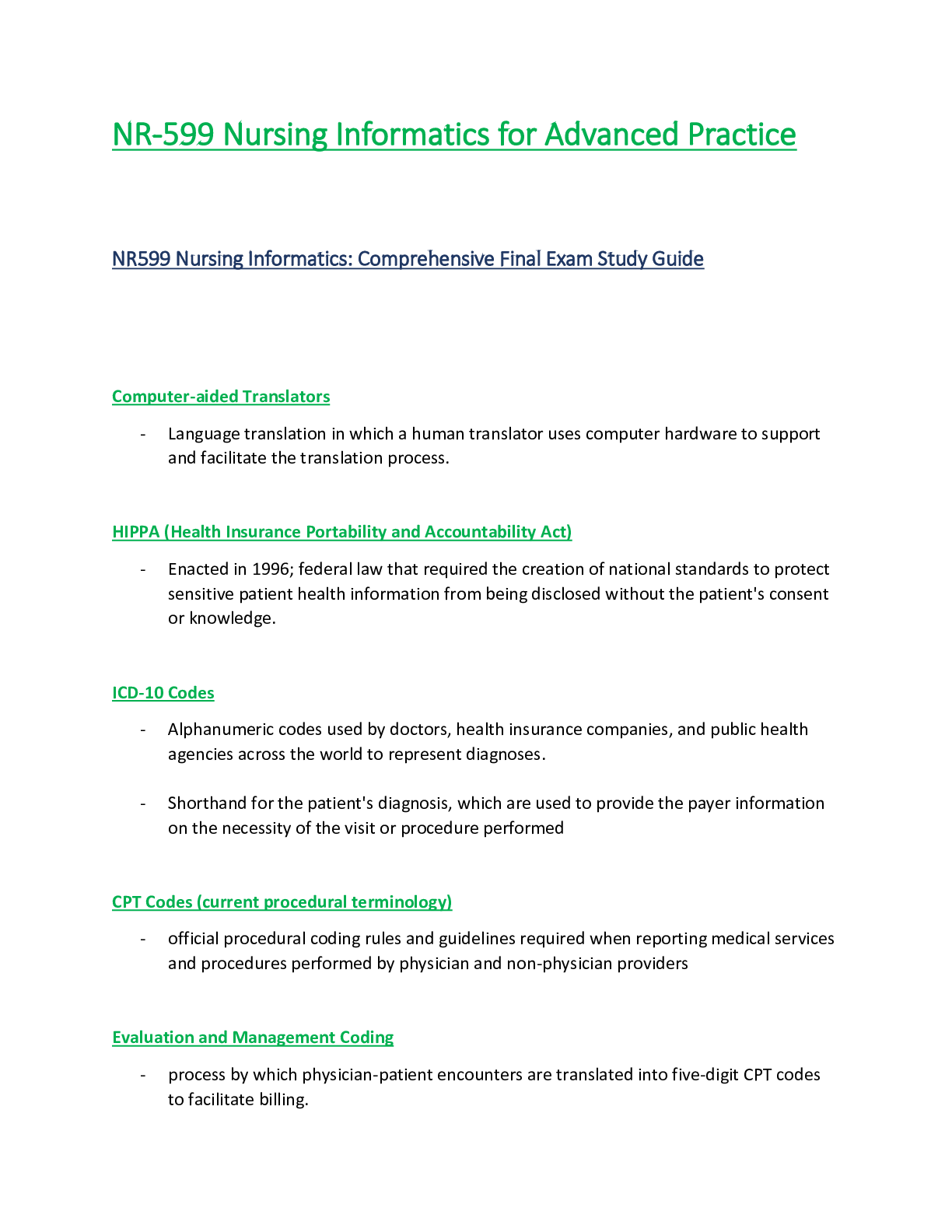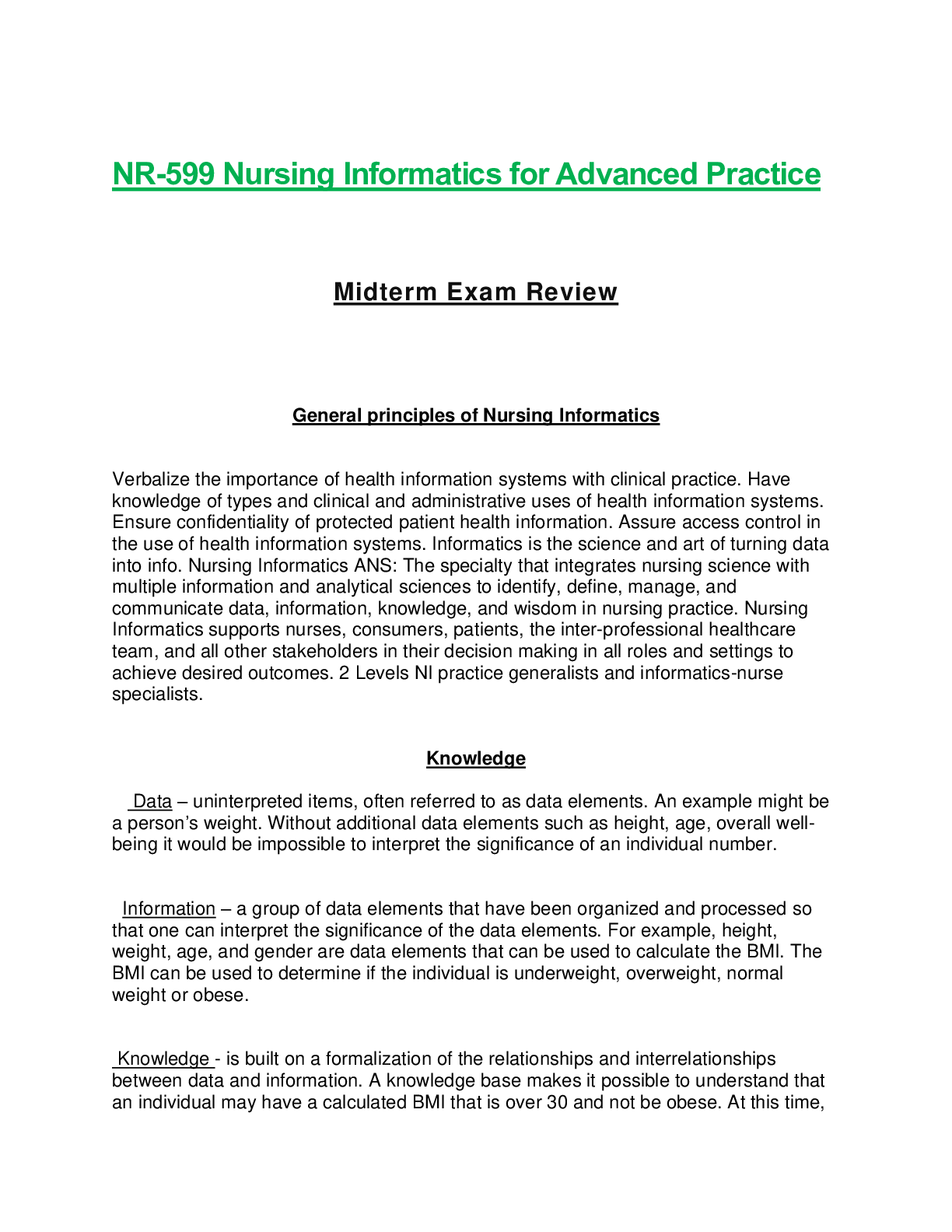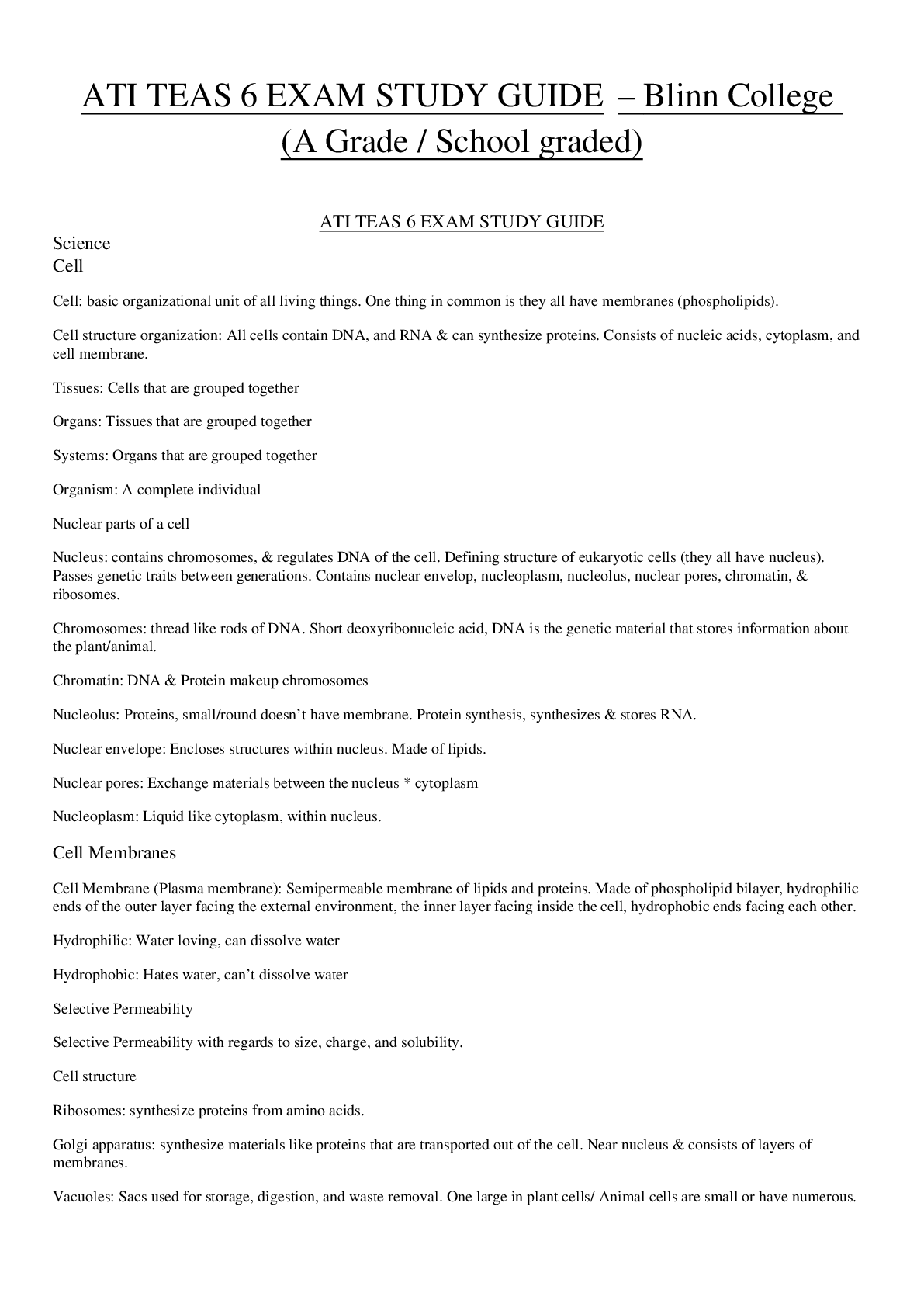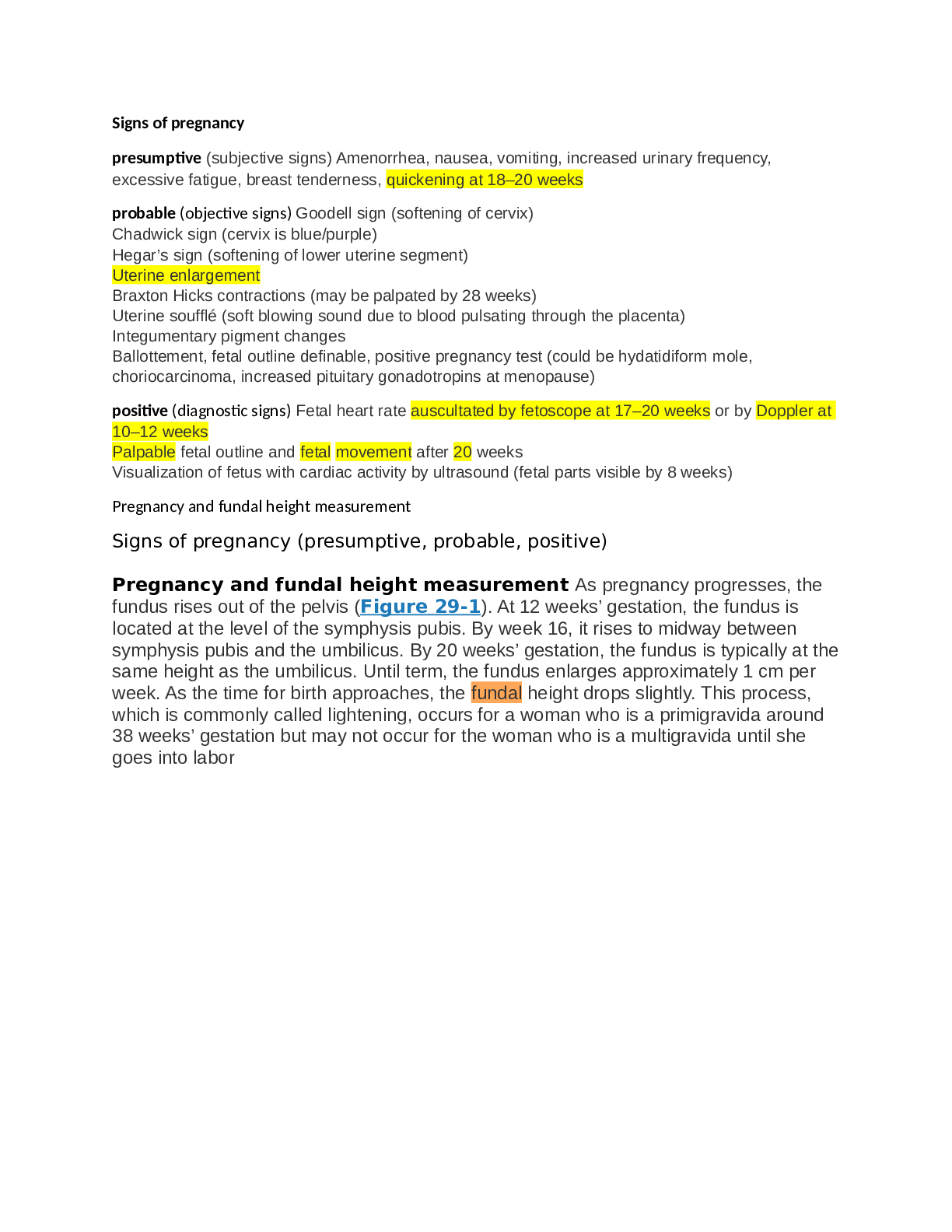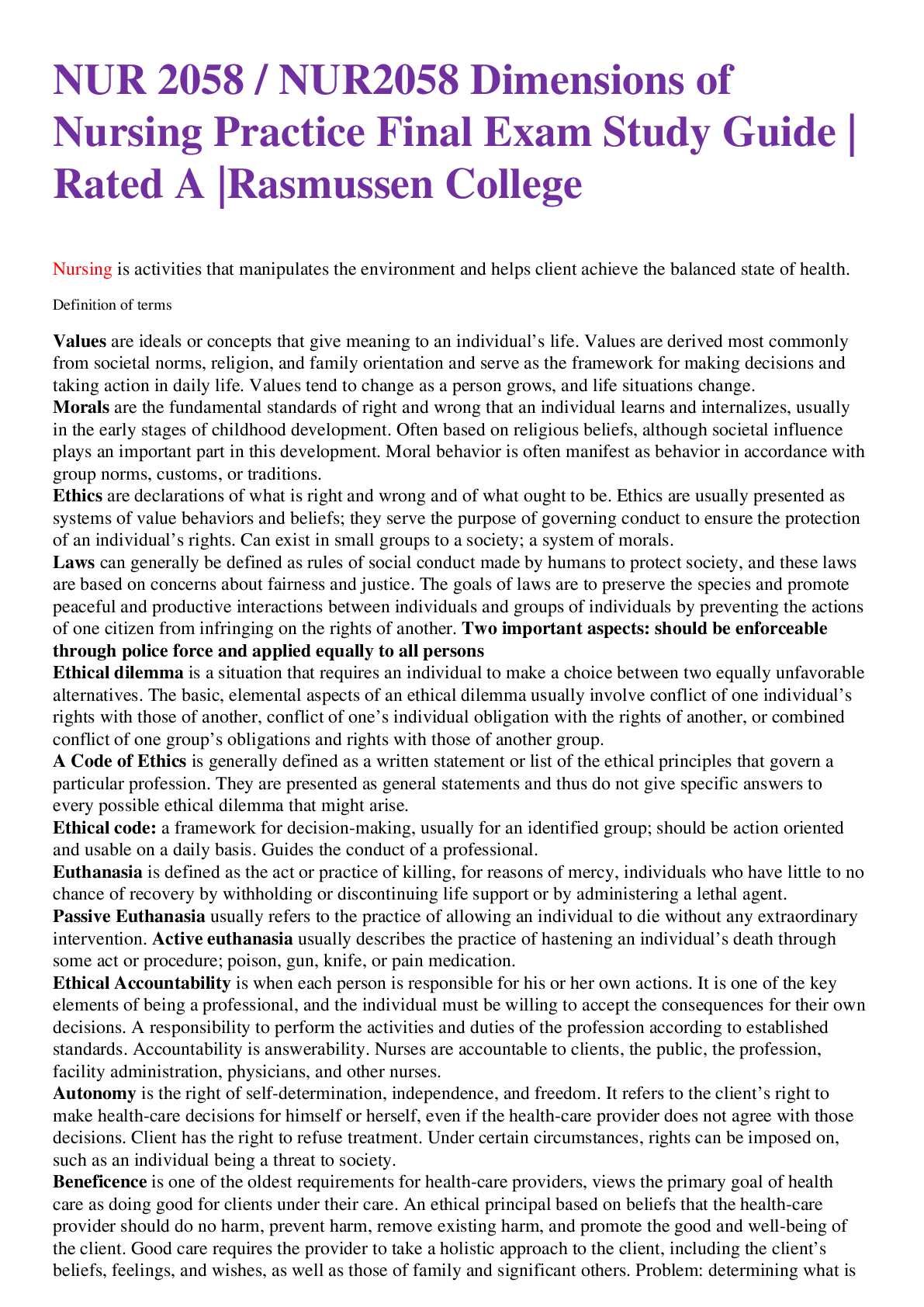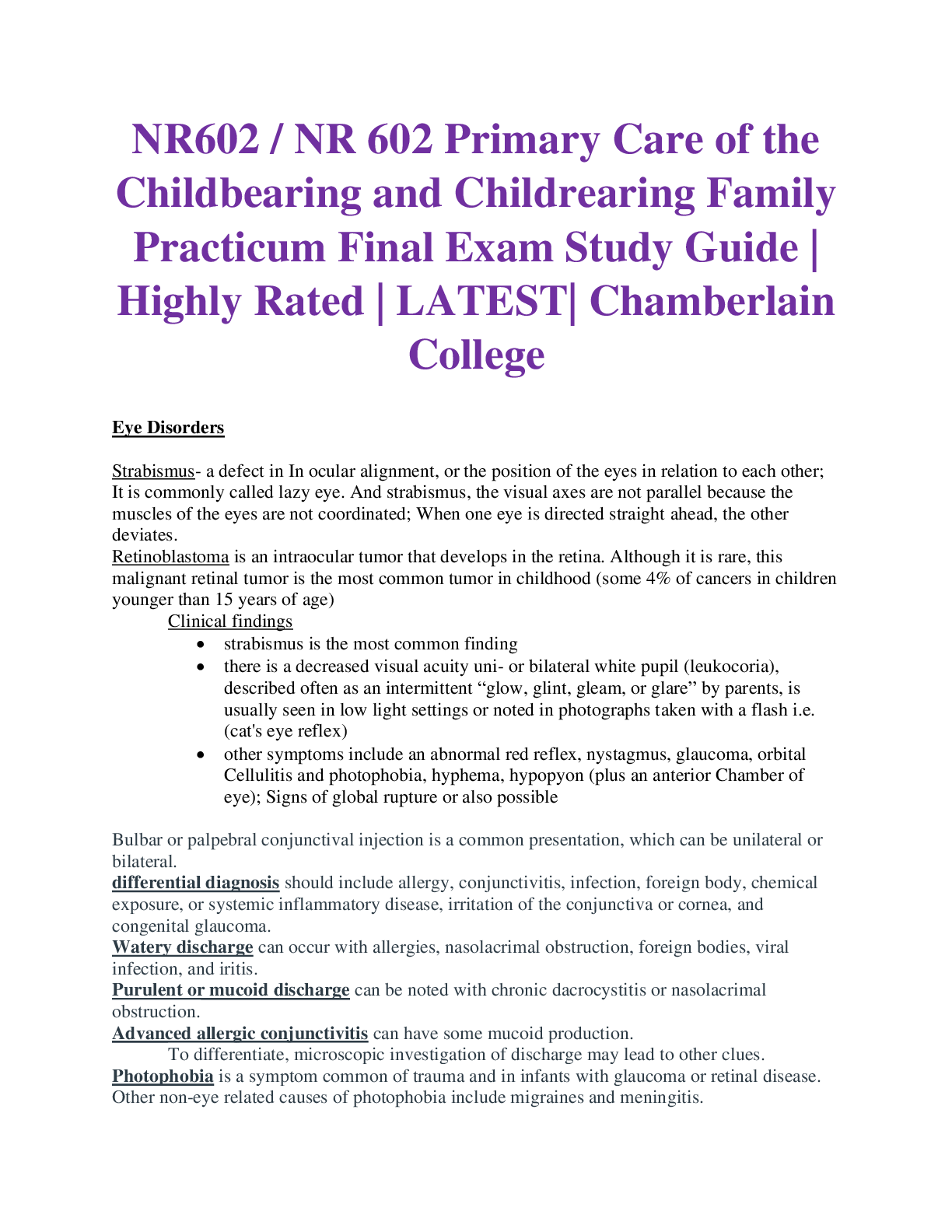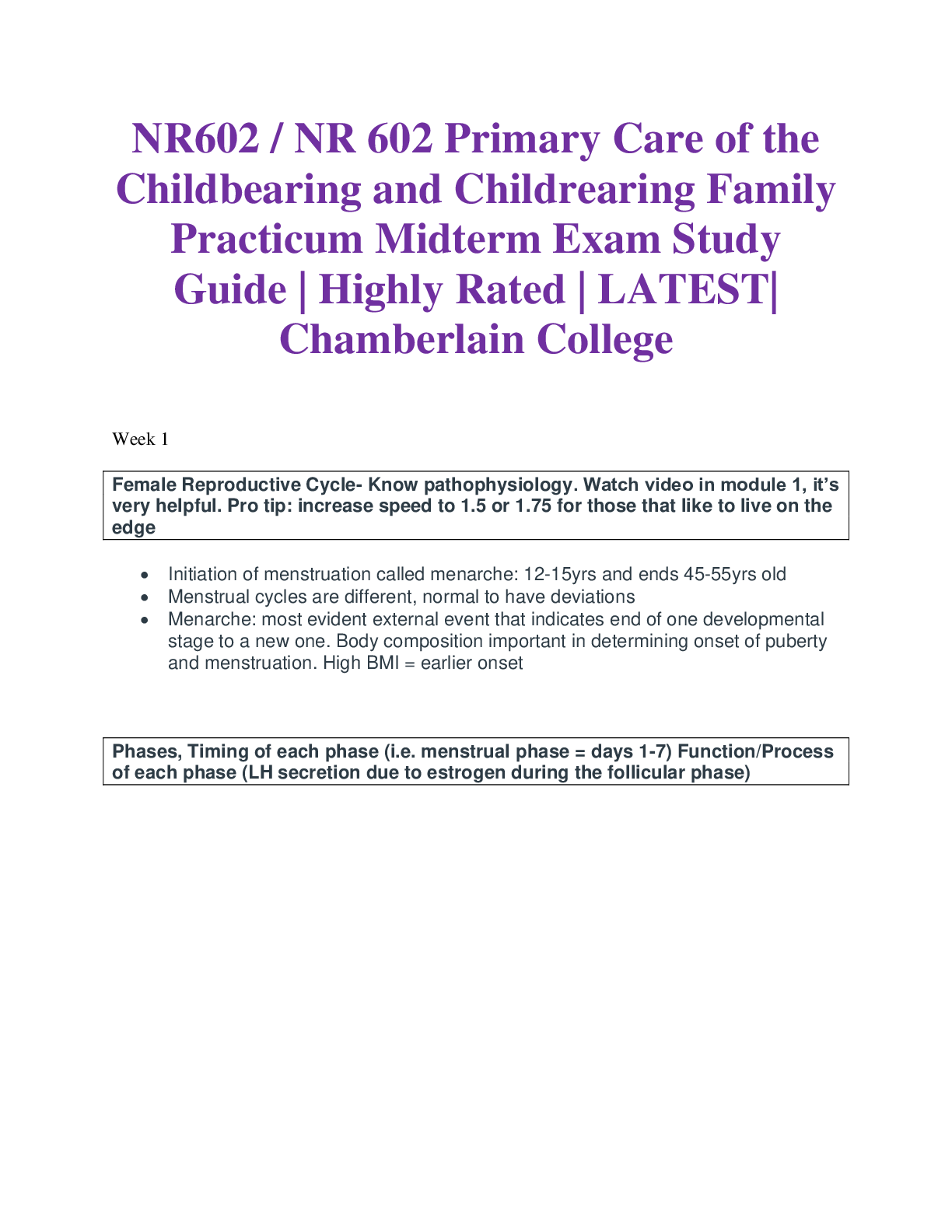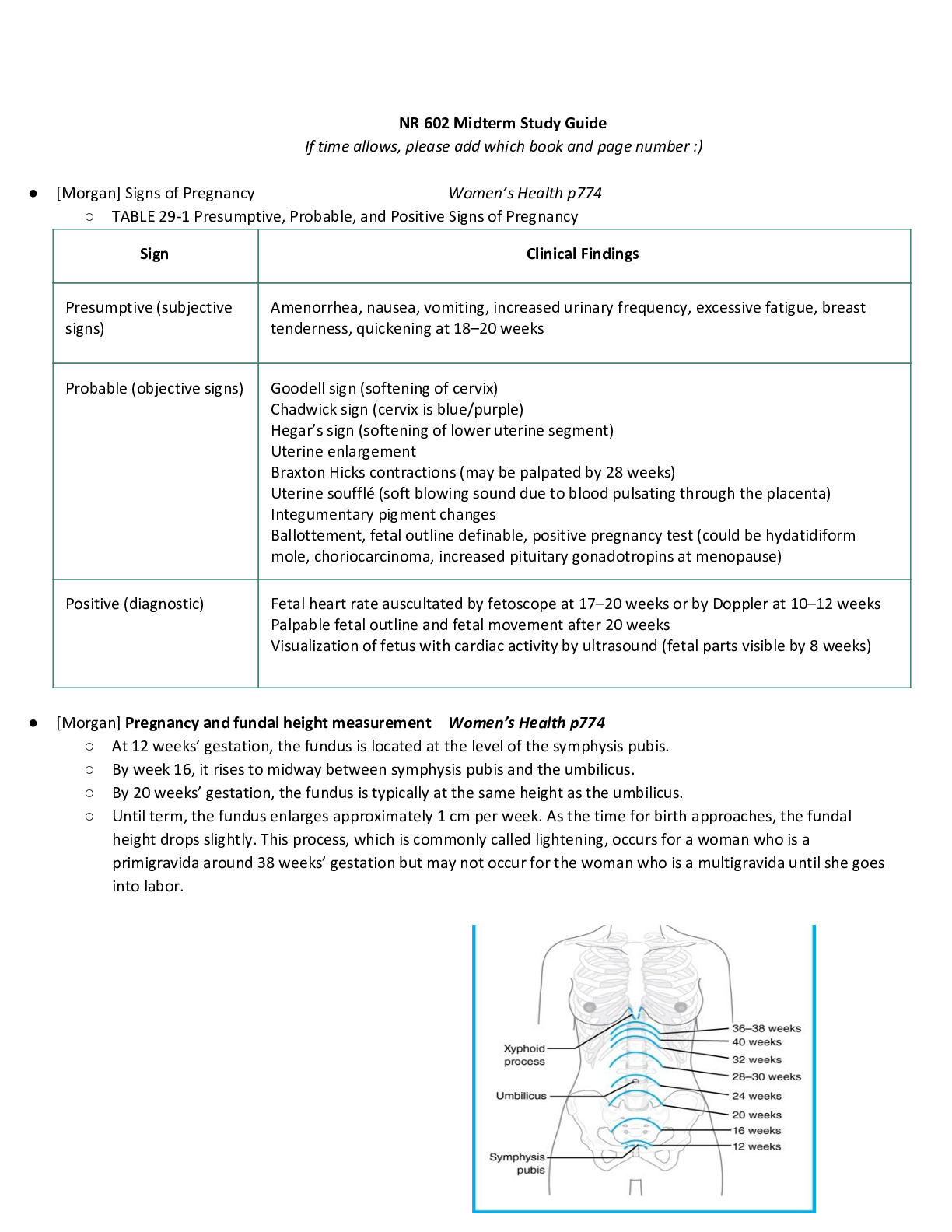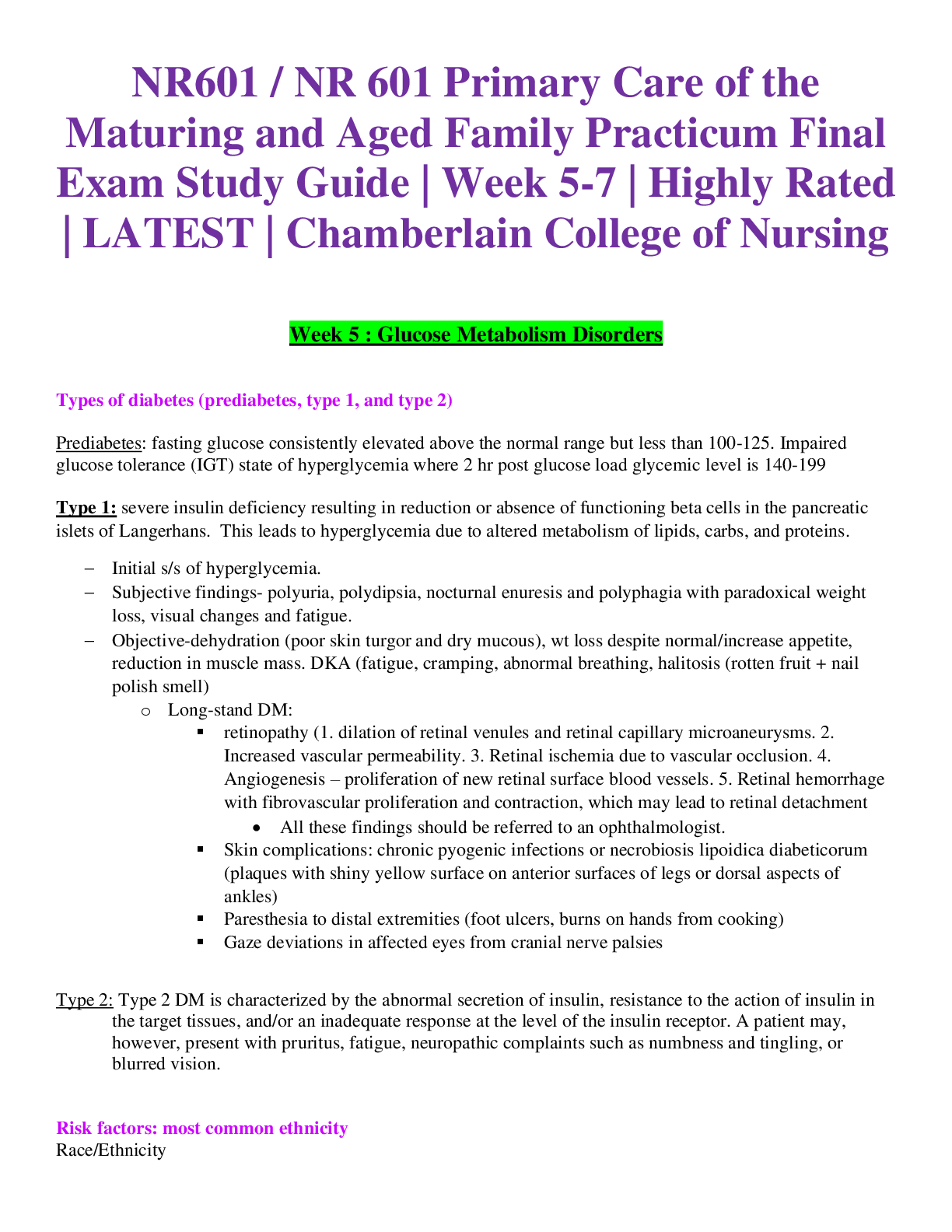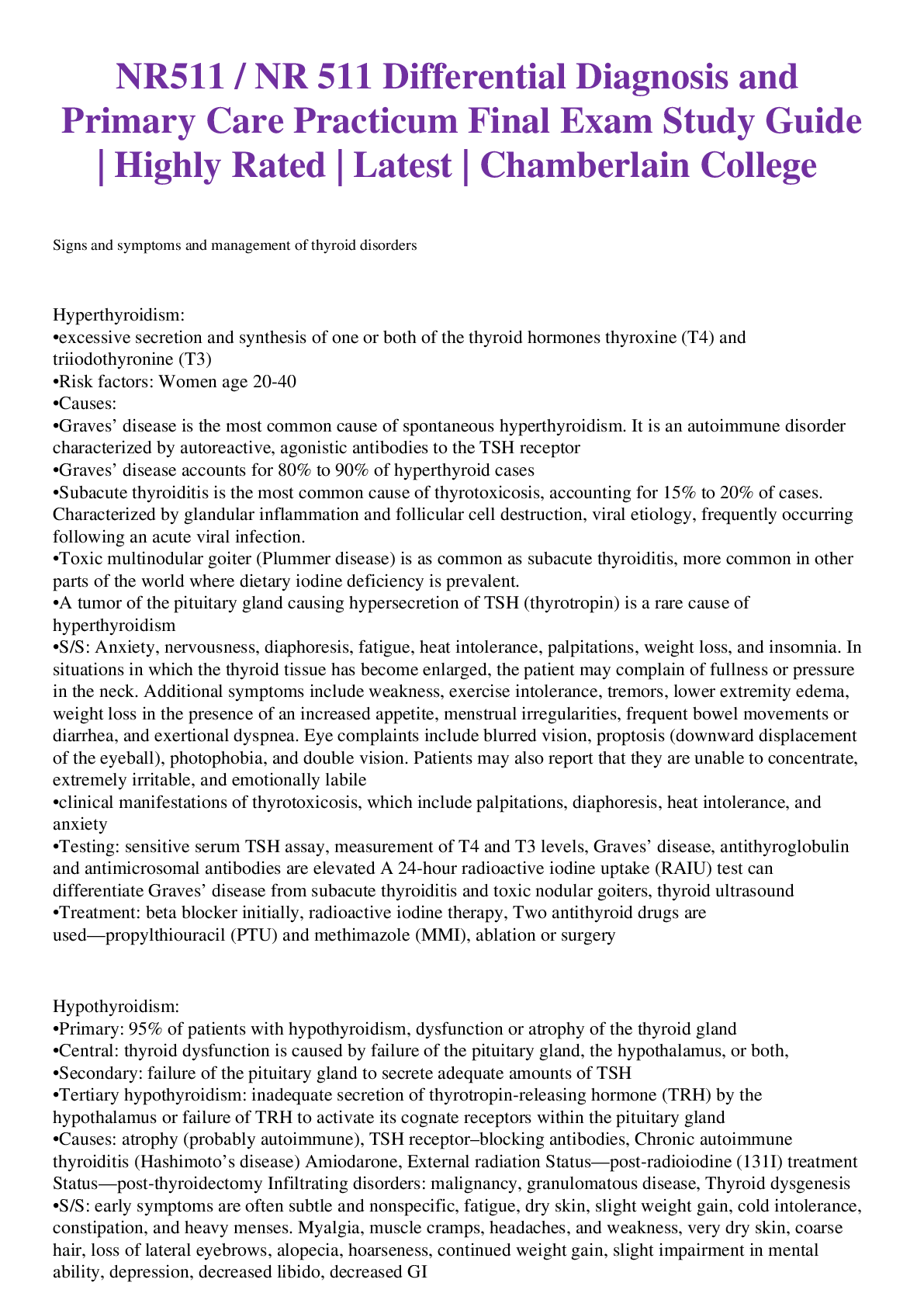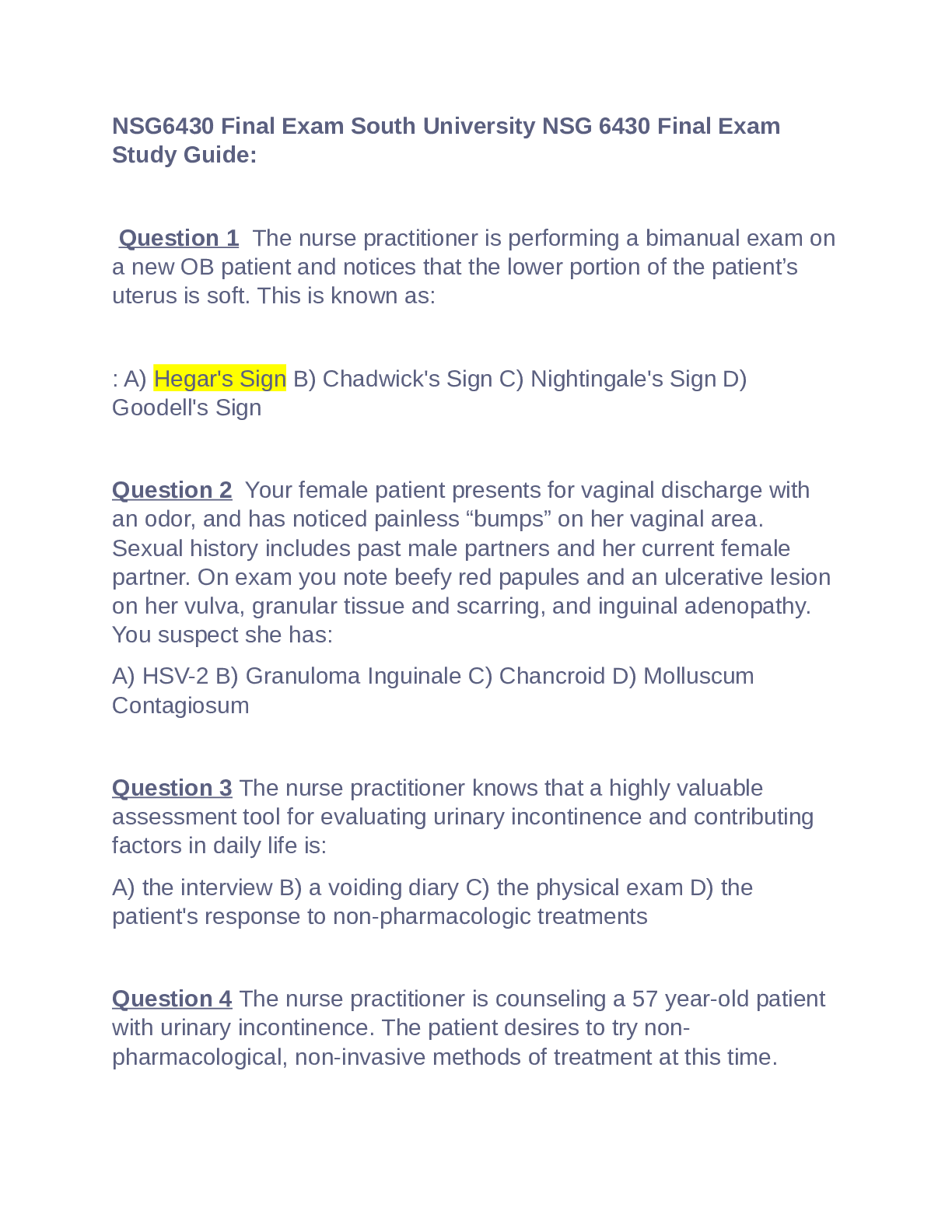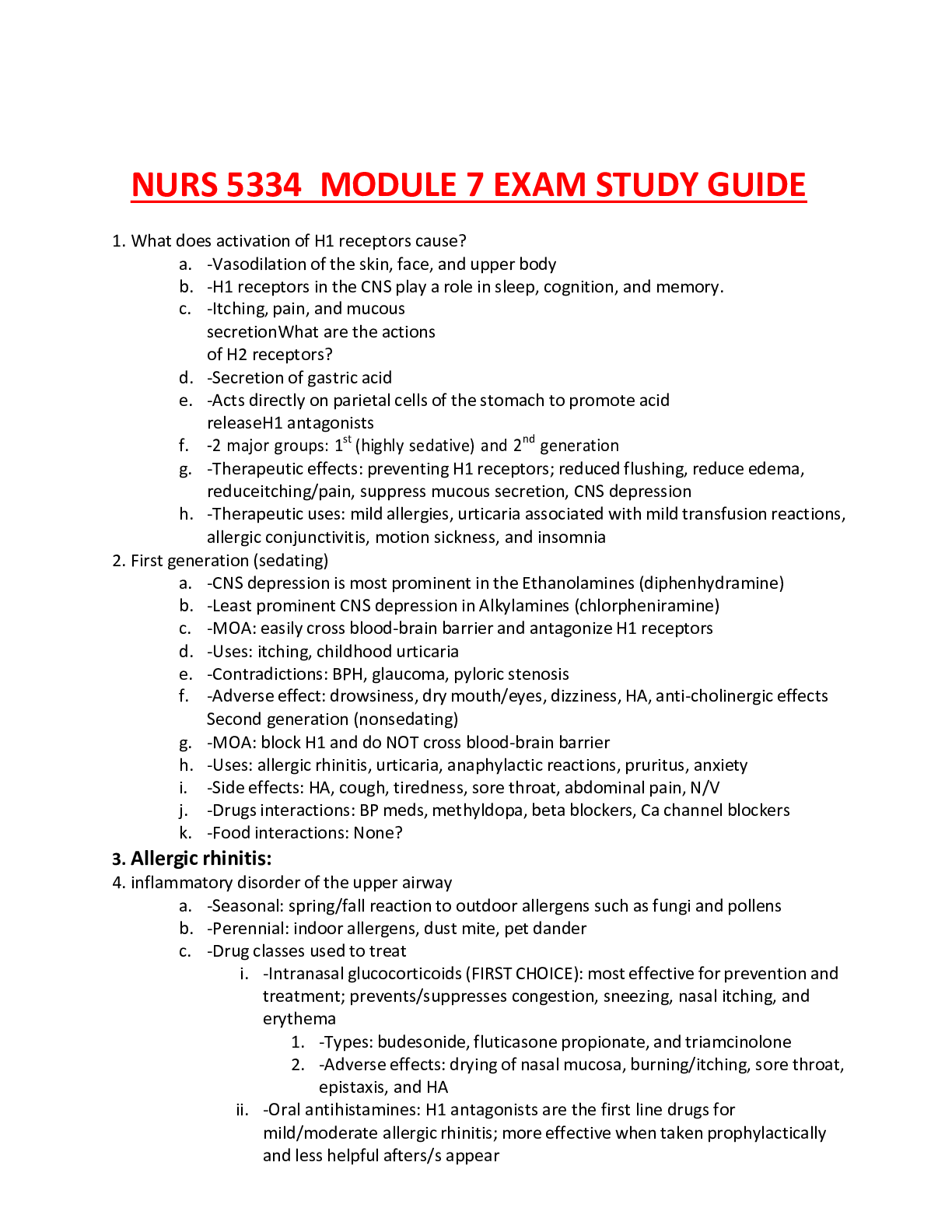*NURSING > STUDY GUIDE > NR-601 Final Exam Study Guide [Week 5 to Week 8] (REVISED VERSION GRADED A): Primary Care of the Mat (All)
NR-601 Final Exam Study Guide [Week 5 to Week 8] (REVISED VERSION GRADED A): Primary Care of the Maturing & Aged Family Practicum - Chamberlain
Document Content and Description Below
NR601 Primary Care of the Maturing & Aged Family Practicum Final Exam Study Guide [Week 5 - Week 8] NR601 FINAL EXAM STUDY GUIDE Week 5: Glucose metabolism disorders Types of DM 1. Type 1- sev ere ins... ulin deficiency resulting in reduction or absence of functioning beta cells in the pancreatic islets of Langerhans. This leads to hyperglycemia due to altered metabolism of lipids, carbs, and proteins. Initial s/s of hyperglycemia. Subjective findings- polyuria, polydipsia, nocturnal enuresis and polyphagia with paradoxical weight loss, visual changes and fatigue. Objective-dehydration(poor skin turgor and dry mucous), wt loss despite normal/increase appetite, reduction in muscle mass. DKA-fatigue, cramping, abnormal breathing 2. Type 2- Type 2 DM is characterized by the abnormal secretion of insulin, resistance to the action of insulin in the target tissues, and/or an inadequate response at the level of the insulin receptor. A patient may, however, present with pruritus, fatigue, neuropathic complaints such as numbness and tingling, or blurred vision. 3. Prediabetic- fasting glucose consistently elevated above the normal range but less than 100-125. Impaired glucose tolerance (IGT) state of hyperglycemia where 2 hr post glucose load glycemic level is 140-199 Diagnostic criteria- there are 4 lab-based criteria to confirm DM: A1C, random plasma glucose, fasting plasma glucose, and 2-hr post load plasma glucose • AIC of 6.5 or higher=diabetes • Random plasma glucose level of 200 WITH classic symptoms of hyperglycemia or a hyperglycemic crisis • Fasting plasma glucose level of 126 or higher on TWO occasions(fasting is defined as no caloric intake for at least 8 hrs • 2-hour post load plasma glucose level of 200 or higher during an OGTT, following consumption of a glucose load containing the equivalent of 75g of anhydrous glucose dissolved in water (OGTT is also used to screen for diabetes during pregnancy) *** In the absence of unequivocal hyperglycemia results should be confirmed by repeat testing on a new blood sample without delay, preferably using the same type of test.*** • *All above-but confirmation of type 2 diabetes mellitus requires: two fasting blood glucoses ≥126 mg/dL or two random blood glucoses ≥200 mg/dL. • You do not screen for type 1 diabetes but you do screen for type 2 if an individual is overweight or obese, regardless of age, and for all adults aged 45 years and older. Tests should be repeated at a minimum of 3 year intervals Show Less [Show More]
Last updated: 1 year ago
Preview 1 out of 30 pages
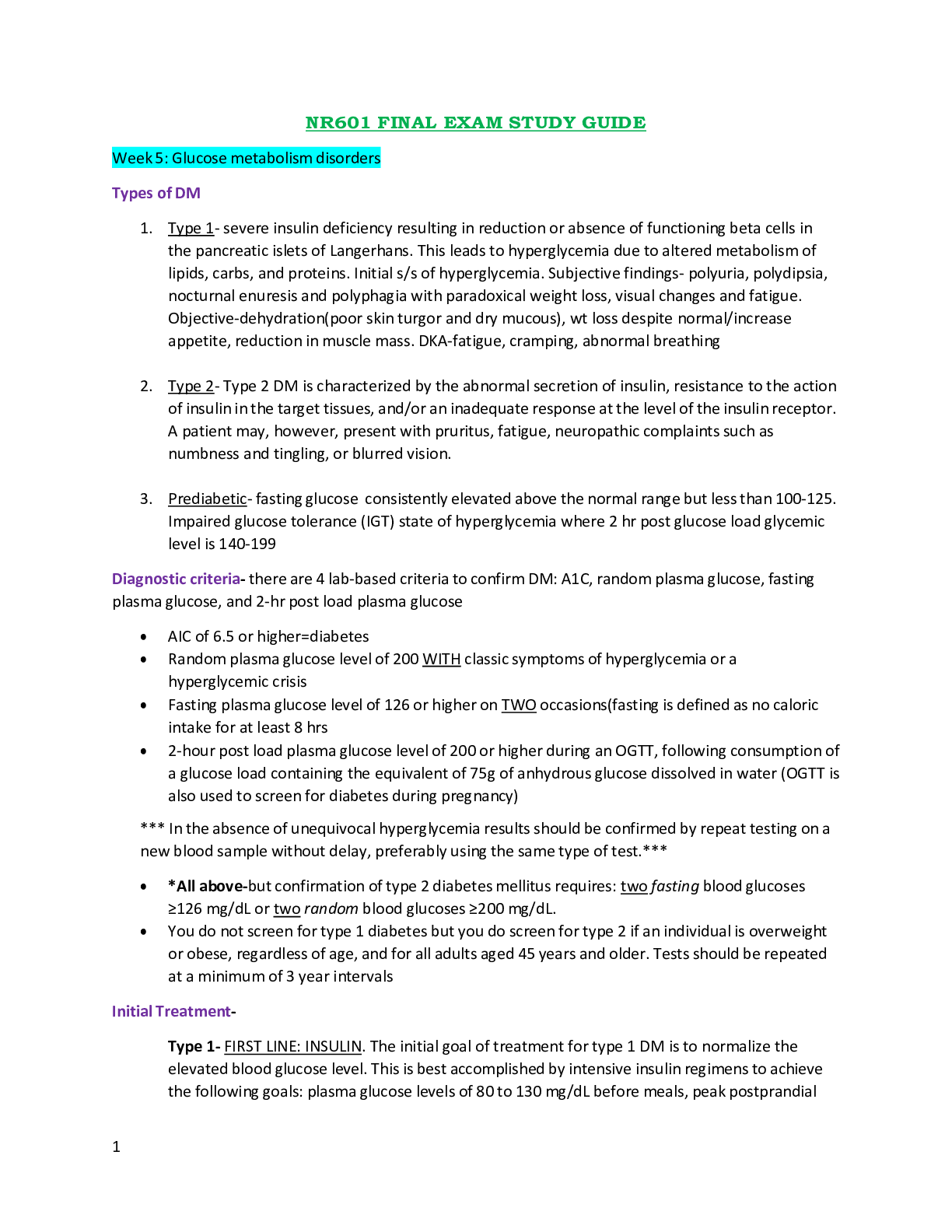
Reviews( 0 )
Document information
Connected school, study & course
About the document
Uploaded On
Aug 10, 2021
Number of pages
30
Written in
Additional information
This document has been written for:
Uploaded
Aug 10, 2021
Downloads
0
Views
51

.png)
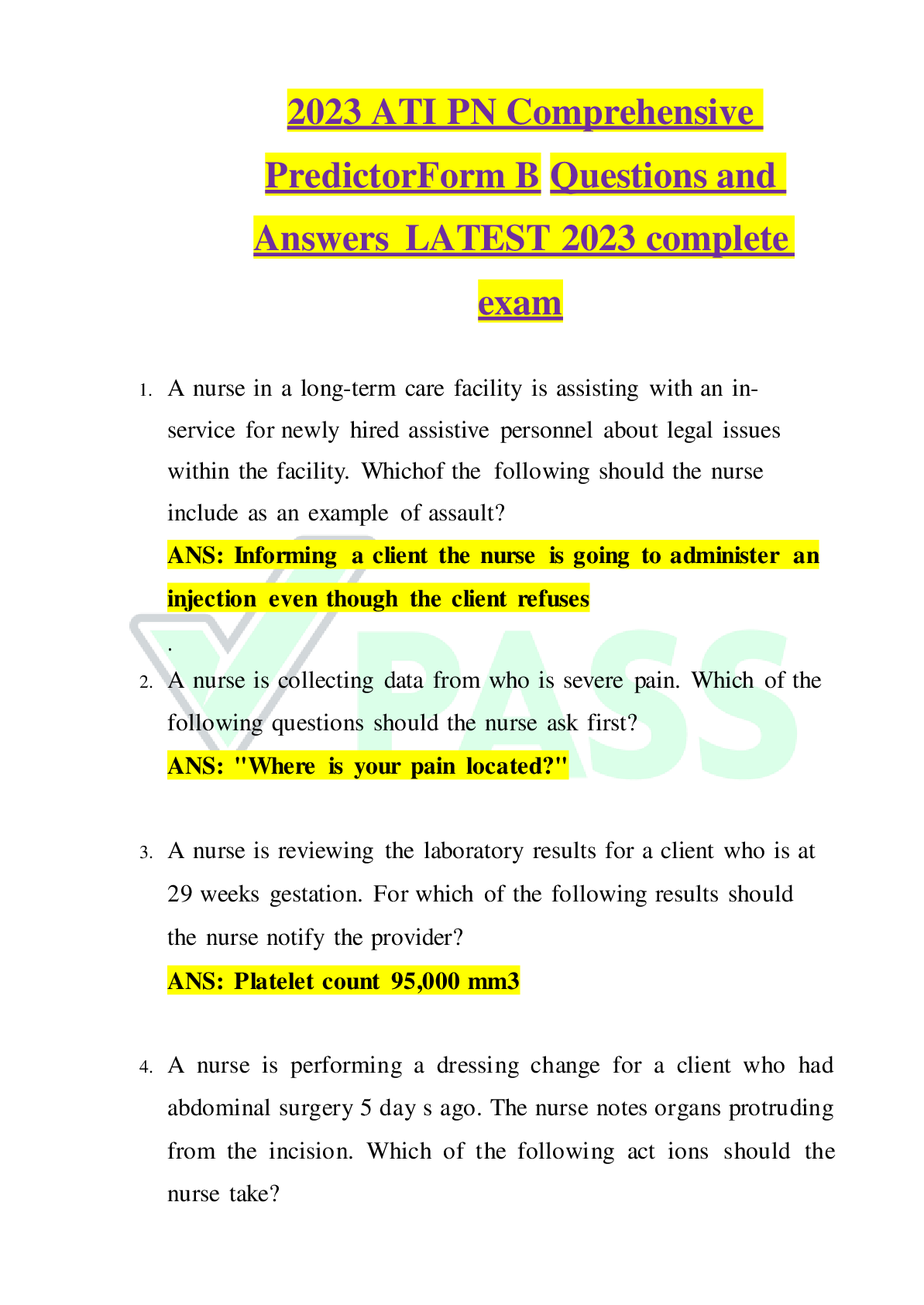
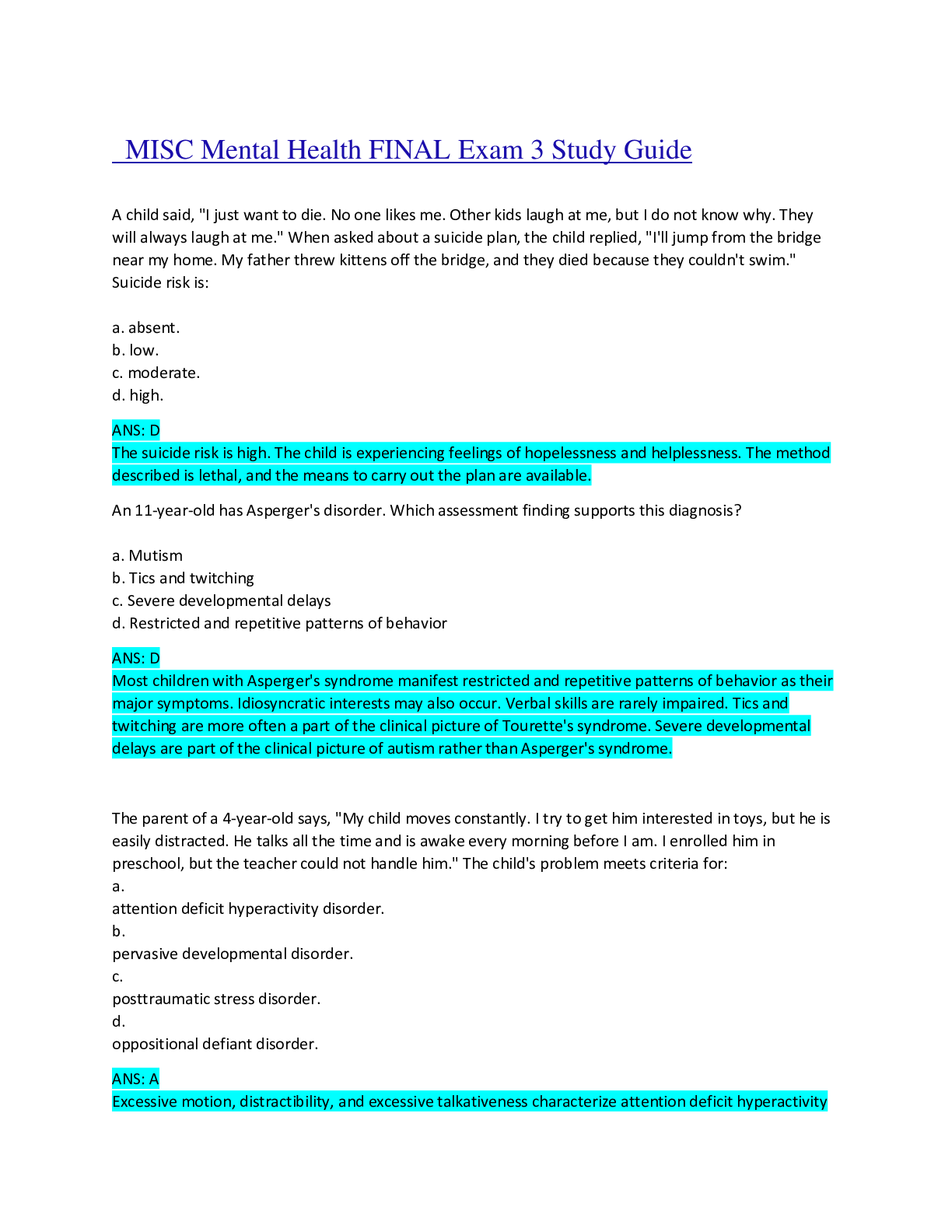
.png)

.png)
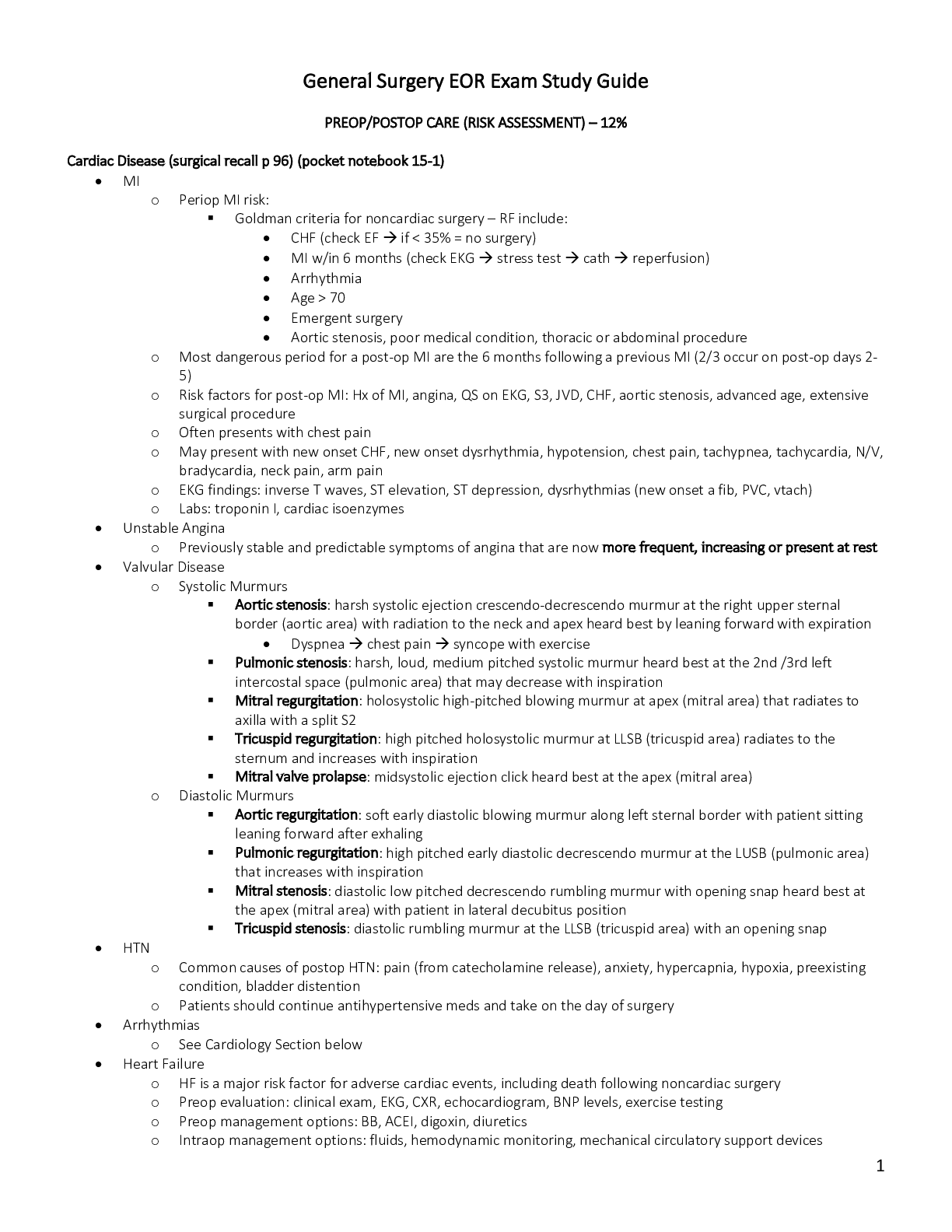
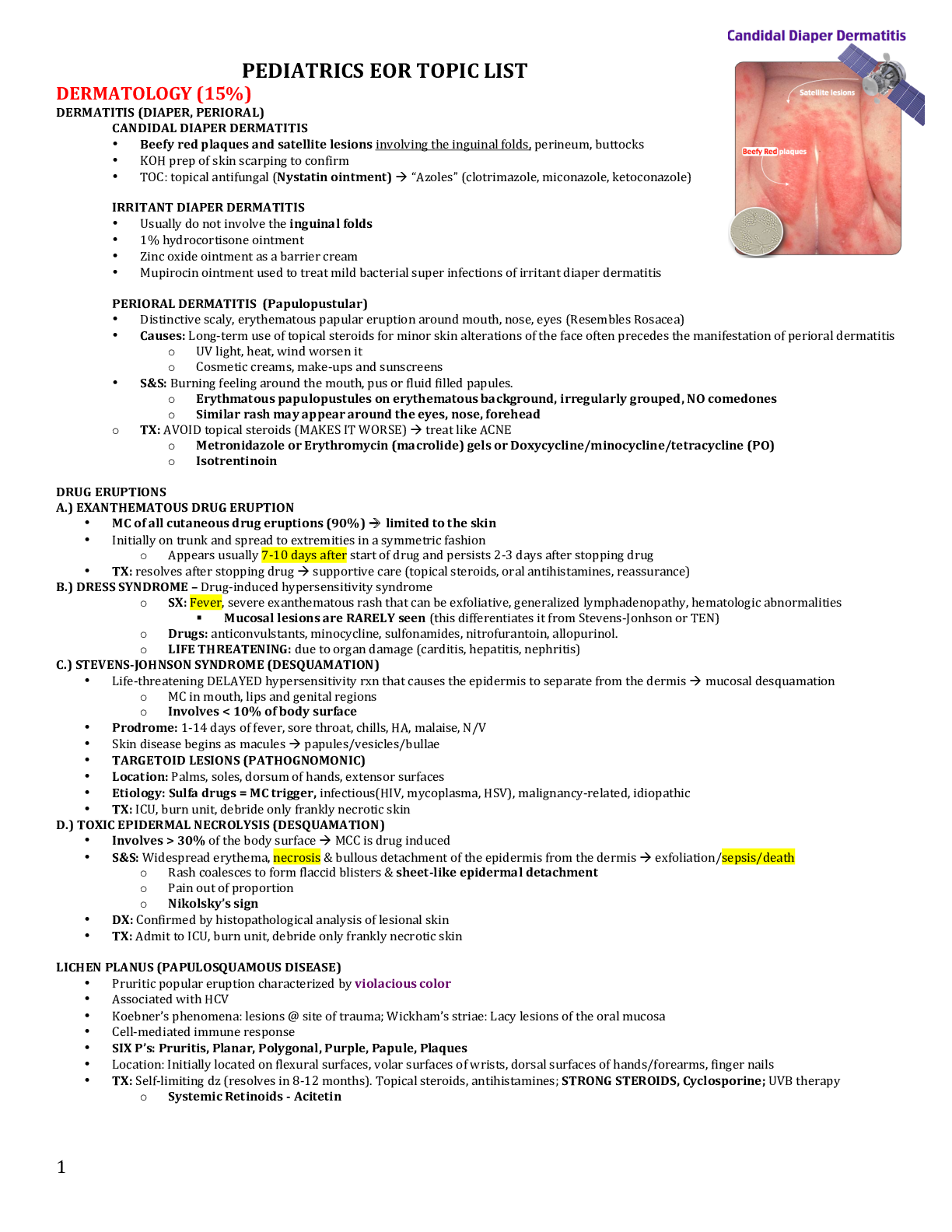
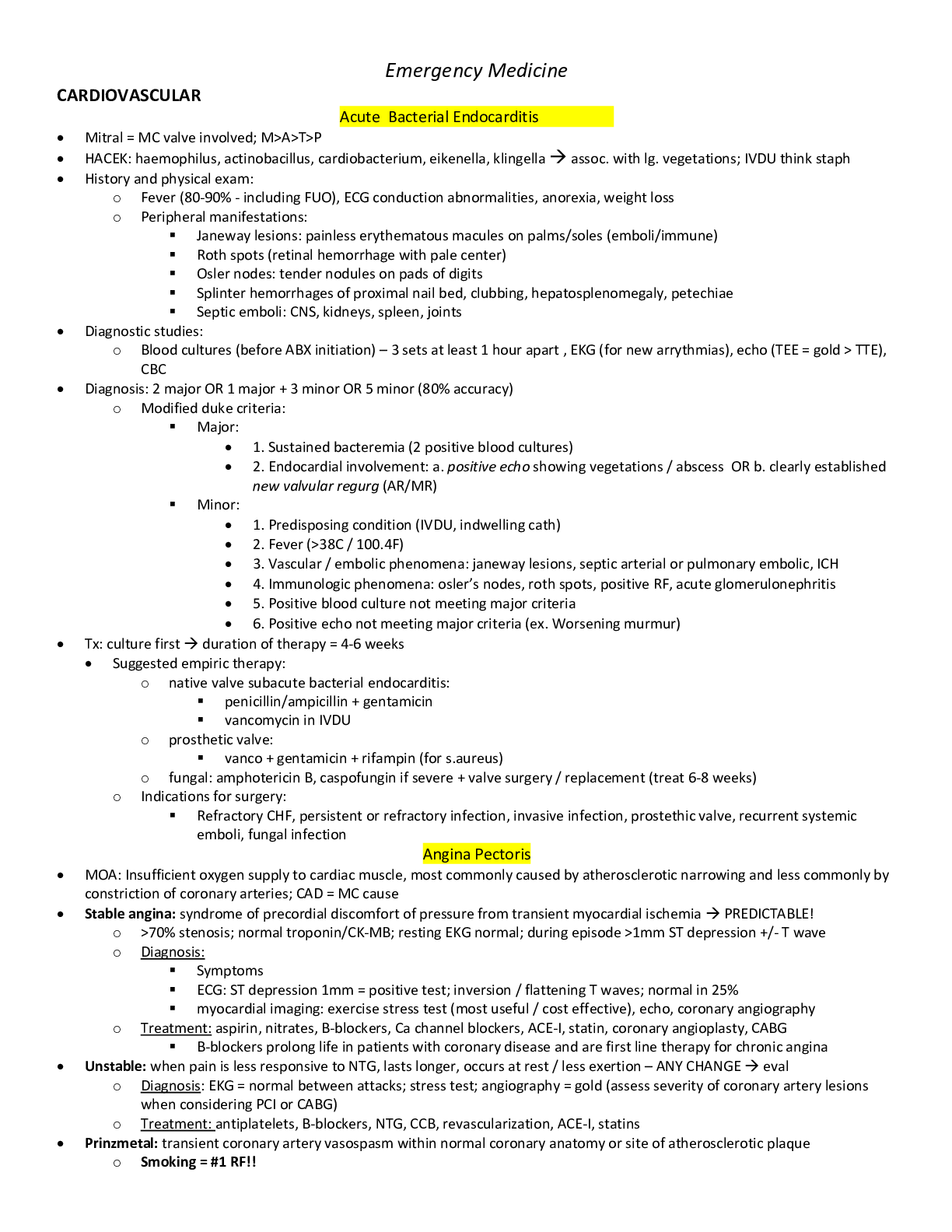
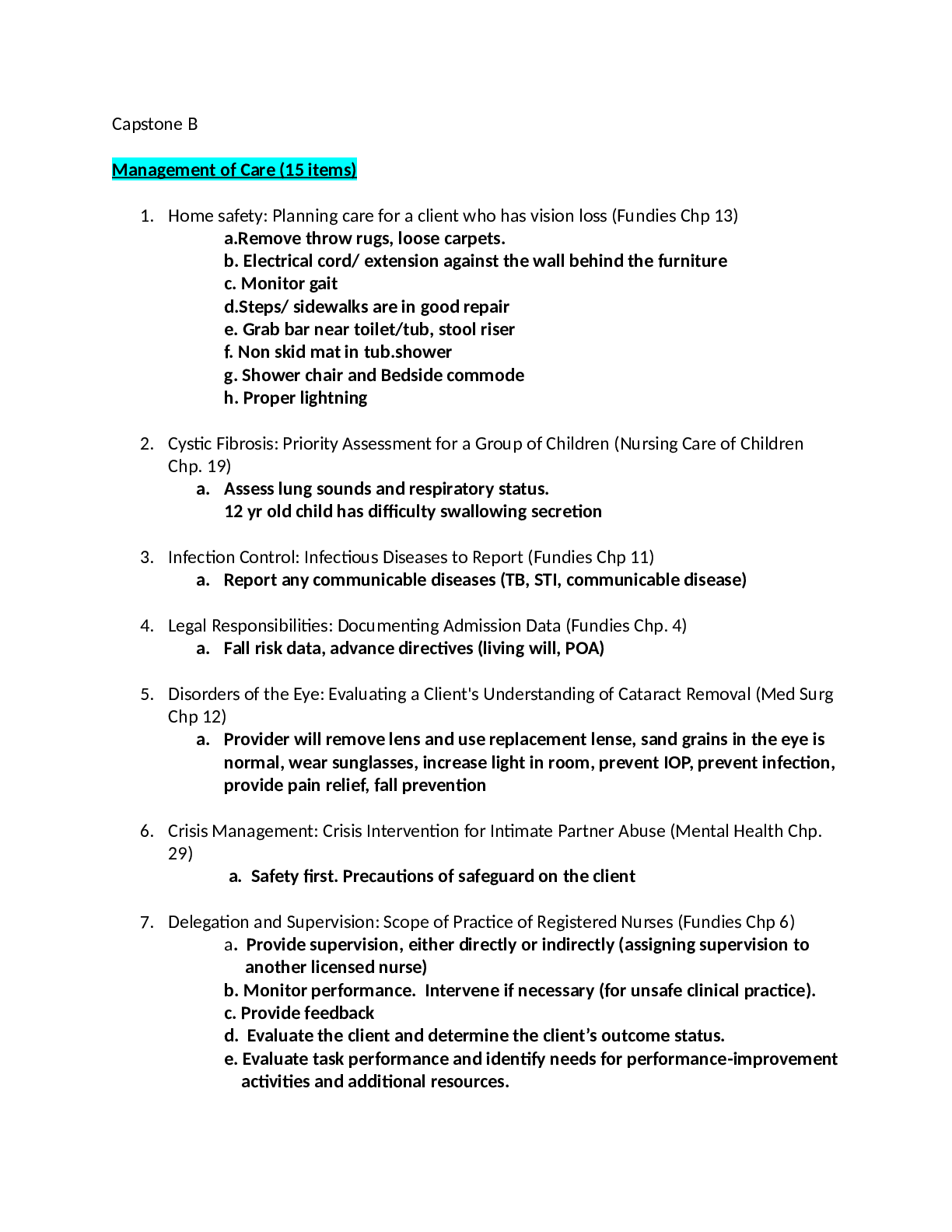
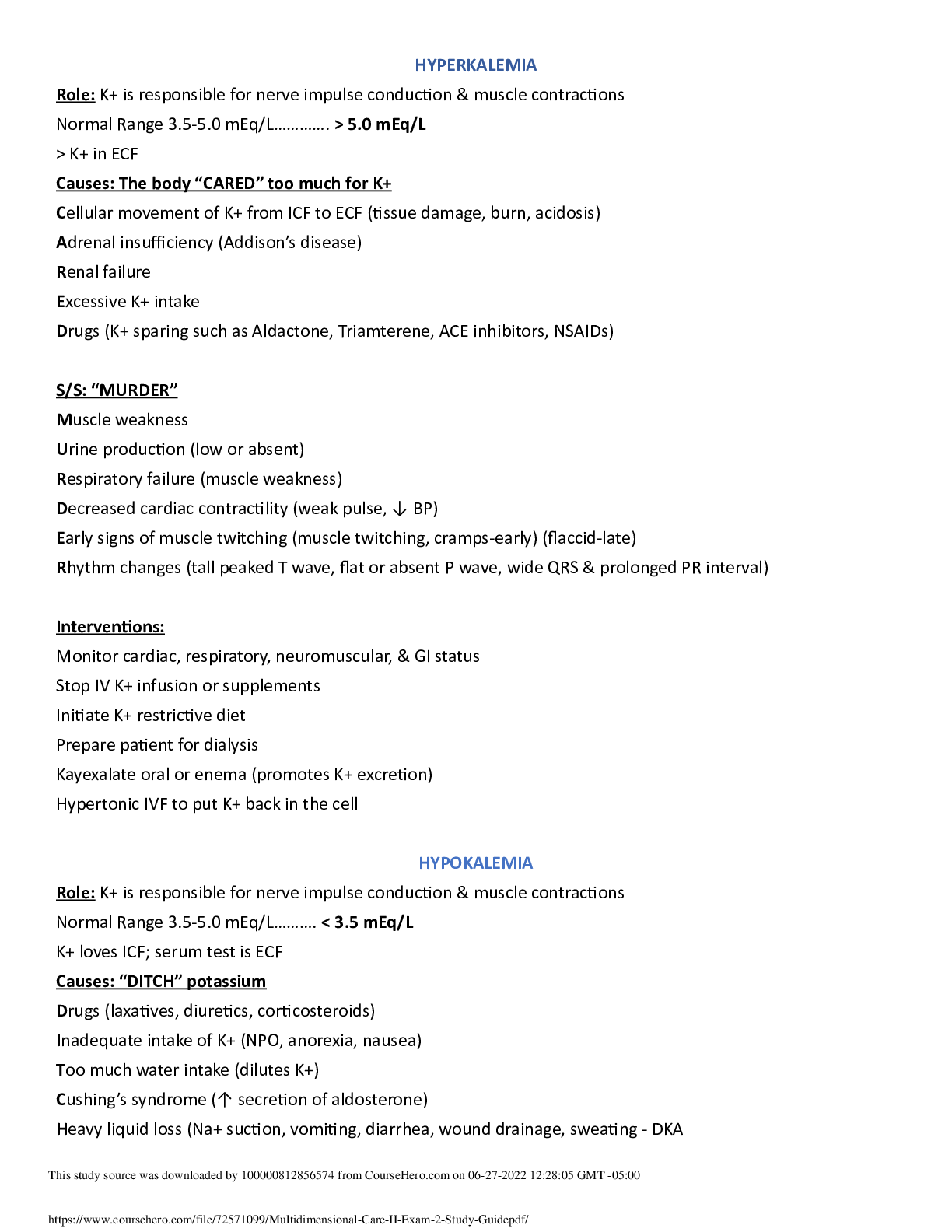
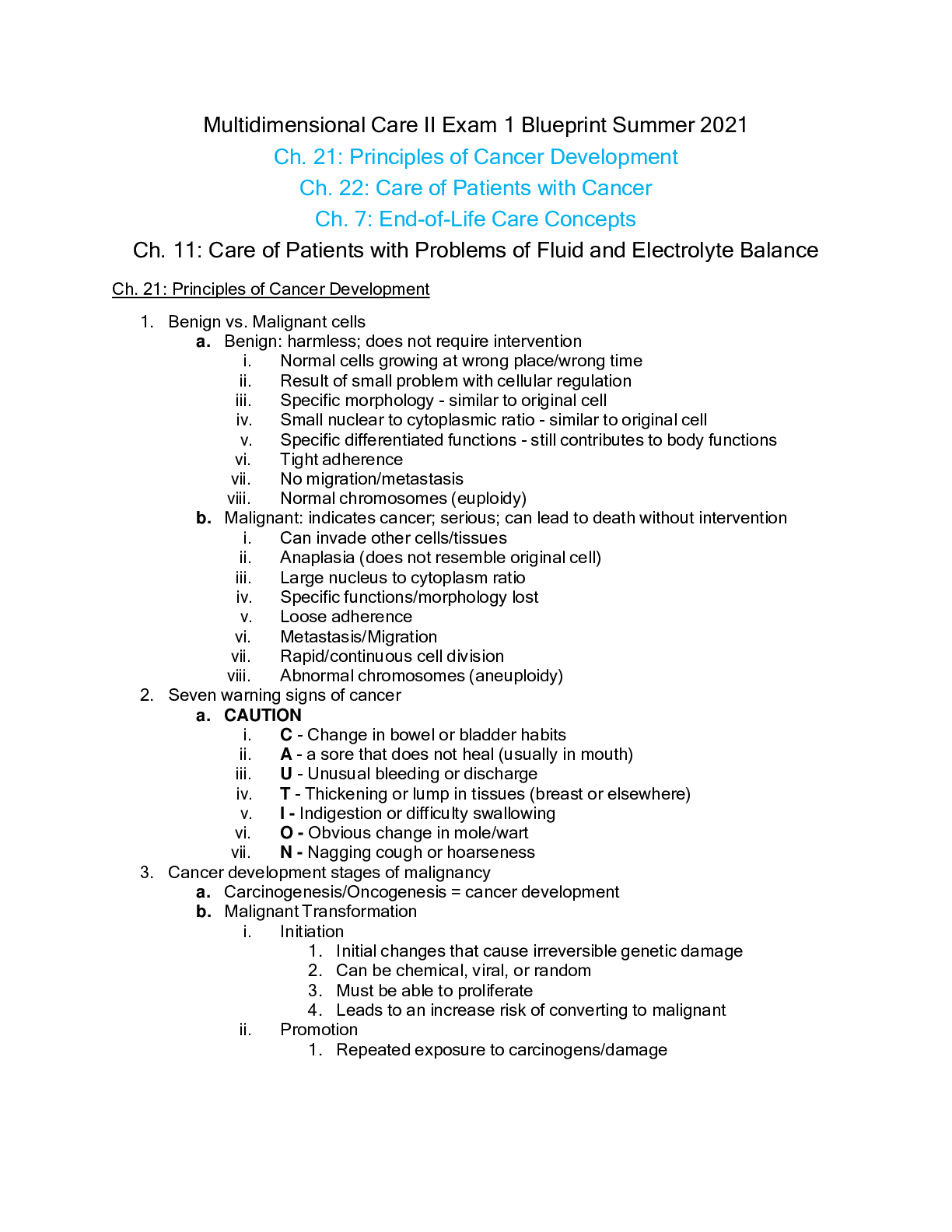
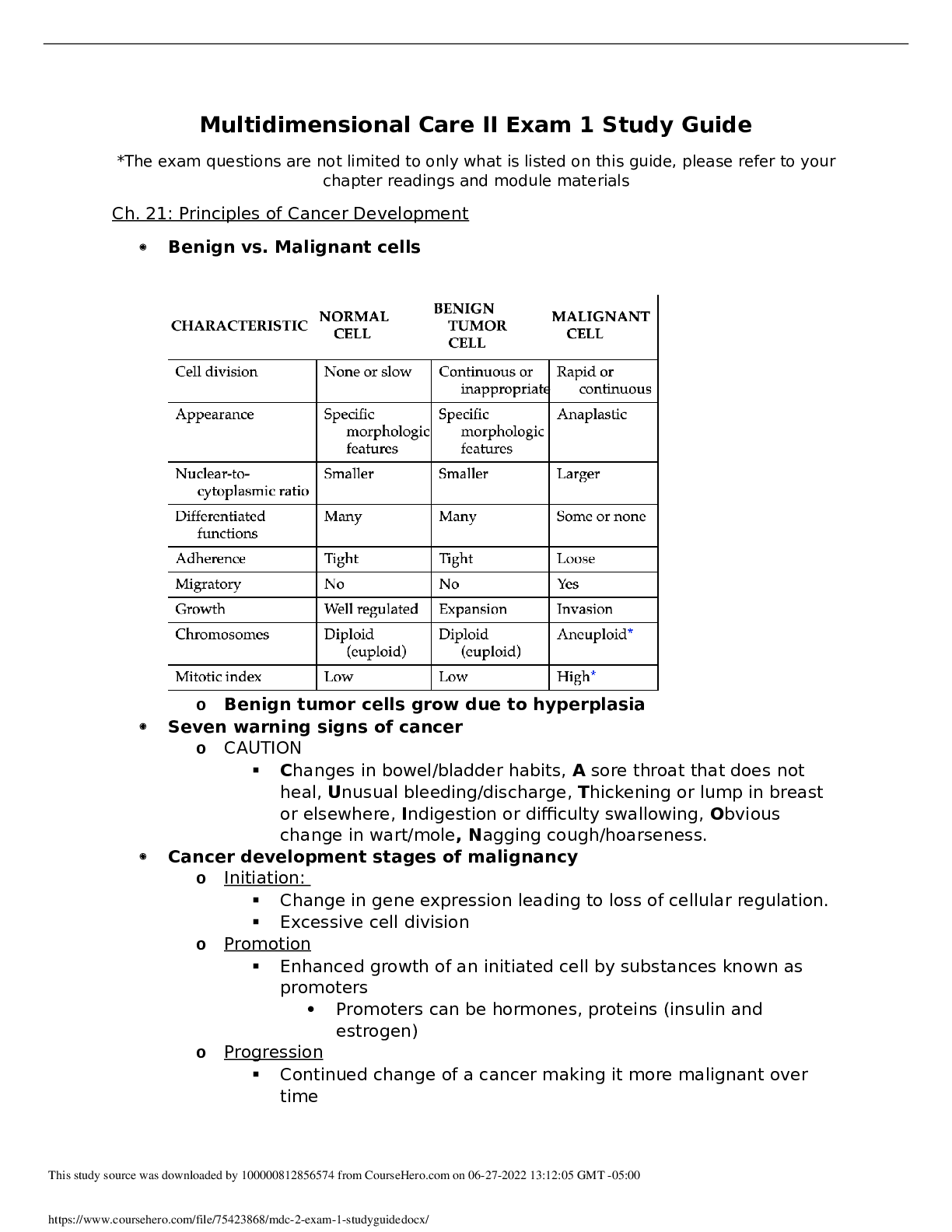
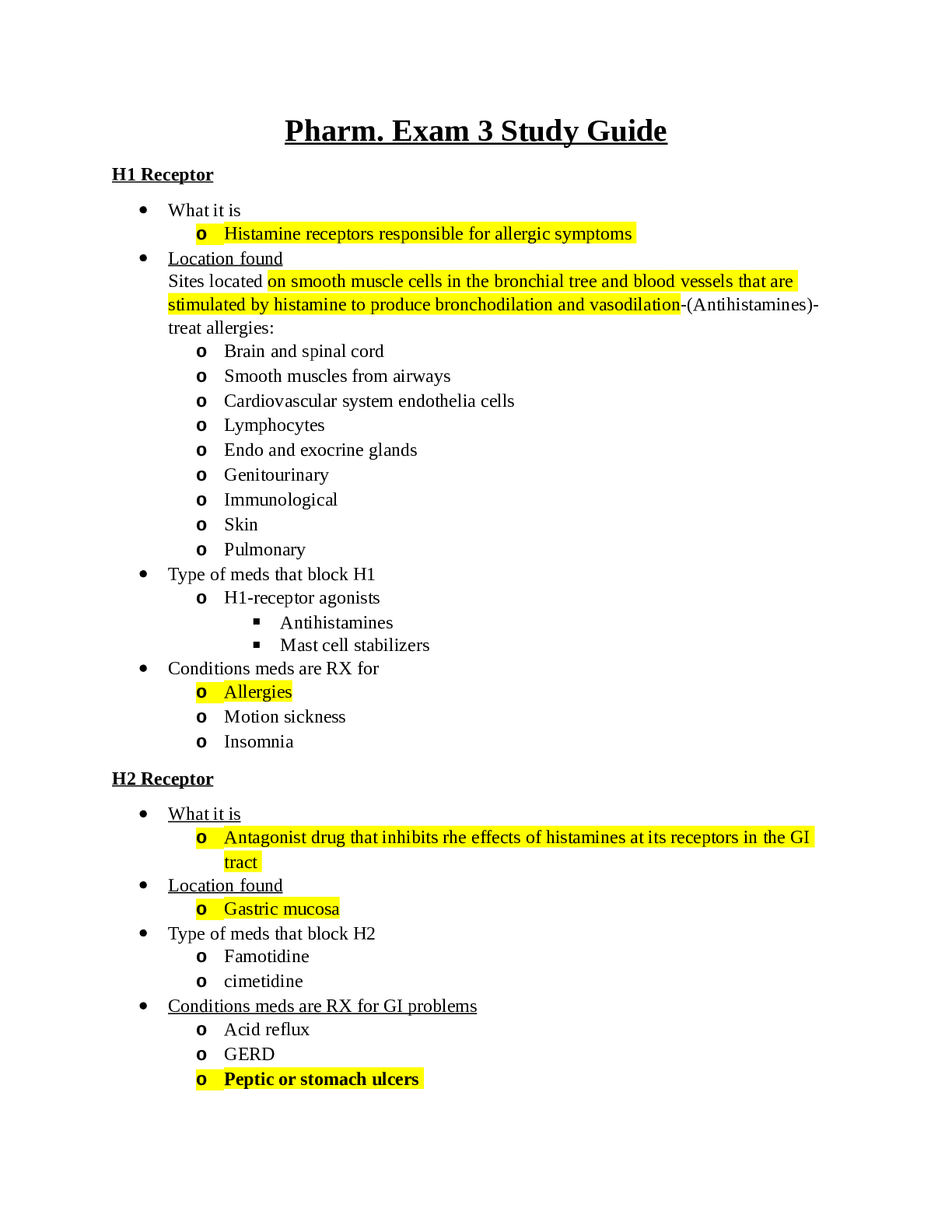
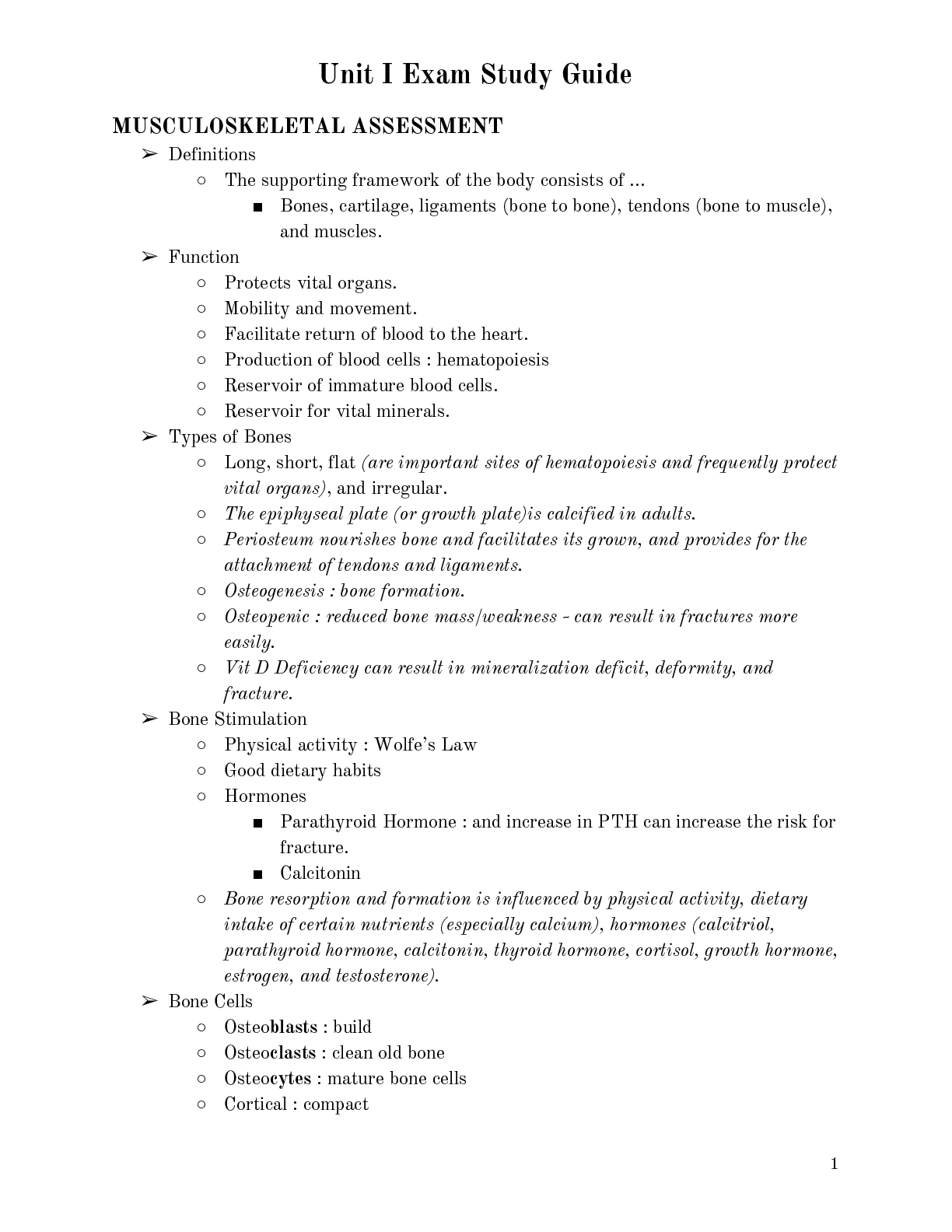





 Rasmussen College.png)
